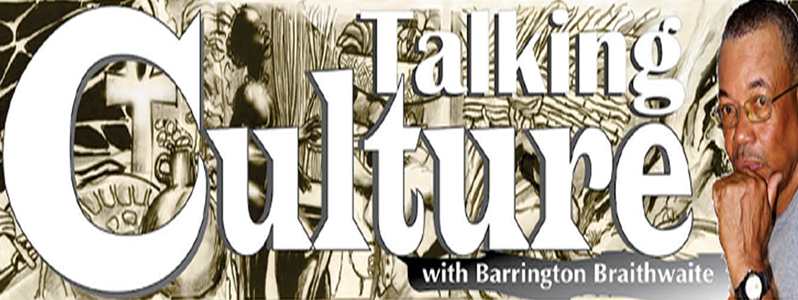EMANCIPATION 1834-8 initiated the ‘Genesis of Modern Guyana’. Within the space of this event emerged the struggles to survive, the conspiracies to prevent some from not surviving comfortably and the mechanisms to throw cultures and human variations by pigmentation and invented class against each other in the bitter struggle for the limited opportunities that a colony designed for specific production models offered. Indentureship followed the course of Emancipation bringing peoples from different experiences and cultures, with opposing interactions,for example; indentured Africans from Sierra Leone supported the emancipated Africans when they protested with a strike for better conditions in 1842, but neither did the Portuguese nor the East Indian indentured labourers or the Christian Churches who the Africans supported, support the strike on 1848. The latter strike was driven by the labour costs, benefit allowances for food and medicine that were denied.
But the impetus of the underlying grievance was the raised taxes levied against the new villages bought by the freed Africans and against the Afro colonial hucksters. The village taxes were intended for drainage works in the villages that were used instead to finance indentureship. Both the Portuguese and Indians had come to Demerara from grim hardships in Madeira with the former and a passion to just work and return to India with the latter, bearing in mind the majority of the immigrants from India who were seduced into indentureship came from the lower castes, and the caste system was primarily an economic creature.
 Though the Plantocracy created on the estate a boundary parameter for the East Indians that merited the derogatory term ‘boundcoolie’ to prevent them from having any interactions with the African villages who would contaminate them with ideas of rights, it did not work and interactions would exist that would lead to activism among the East Indians against the unreasonable impositions of the estate owners. The Portuguese died at an alarming rate on the sugar plantations. They would, in turn, gravitate to the retail business and be seen by the planter controlled Colonial Court of Policy as an effective tool to be thrown against the rise of Afro-businesses. The method of divide and rule would explode as life grew harder in the colony and the machinations of the colonial authorities to cultivate a buffer class and culture a racial divide through the courts. This led to the 1856 Angel Gabriel riots, instigated by the outright use of high-cost shop and huckster licenses instituted to drive the Afro colonials out of business, to the benefit of the Portuguese. These contentions were articulated by a talented Afro creole orator named James Sayers Orr, who cultivated a crusade against the Catholics culminating in the Angel Gabriel riots. The 1889 riots followed in a very difficult economic period in the colony and were generated by blatant imbalanced court verdicts with incidents involving Afro-colonials and Portuguese and accusations of shop counter skulduggery. To quote Brian Moore ‘Cultural Power Resistance and Pluralism colonial Guyana 1838-1900’- “Nineteenth century Guyana was by no means a melting pot. On the contrary, there was a consistently high level of suspicion, tension and violence which characterised inter-group relationships. In addition to the aforementioned anti-Portuguese disturbances, there was also friction between Blacks and Indians, Indians and Chinese, Chinese and Whites, Whites and Blacks, Indians and Whites, and even among different categories of Indians.”
Though the Plantocracy created on the estate a boundary parameter for the East Indians that merited the derogatory term ‘boundcoolie’ to prevent them from having any interactions with the African villages who would contaminate them with ideas of rights, it did not work and interactions would exist that would lead to activism among the East Indians against the unreasonable impositions of the estate owners. The Portuguese died at an alarming rate on the sugar plantations. They would, in turn, gravitate to the retail business and be seen by the planter controlled Colonial Court of Policy as an effective tool to be thrown against the rise of Afro-businesses. The method of divide and rule would explode as life grew harder in the colony and the machinations of the colonial authorities to cultivate a buffer class and culture a racial divide through the courts. This led to the 1856 Angel Gabriel riots, instigated by the outright use of high-cost shop and huckster licenses instituted to drive the Afro colonials out of business, to the benefit of the Portuguese. These contentions were articulated by a talented Afro creole orator named James Sayers Orr, who cultivated a crusade against the Catholics culminating in the Angel Gabriel riots. The 1889 riots followed in a very difficult economic period in the colony and were generated by blatant imbalanced court verdicts with incidents involving Afro-colonials and Portuguese and accusations of shop counter skulduggery. To quote Brian Moore ‘Cultural Power Resistance and Pluralism colonial Guyana 1838-1900’- “Nineteenth century Guyana was by no means a melting pot. On the contrary, there was a consistently high level of suspicion, tension and violence which characterised inter-group relationships. In addition to the aforementioned anti-Portuguese disturbances, there was also friction between Blacks and Indians, Indians and Chinese, Chinese and Whites, Whites and Blacks, Indians and Whites, and even among different categories of Indians.”
But above all this conflict over limited resources, low incomes and a virtual social caste system the freed Afro-colonial was able to establish schools, persevere into areas as artisans and aspire to education as a means out of poverty. In the 1880s onward to the turn of the century, the Afro colonial/ creole groups established friendly societies and lodges, the grass root Susu-hand, or box-hand, the foremost purpose of these institutions was to establish support in the crisis of sickness or death, and income for trade (after the betrayal by the banks when the banks refused to honour the cash in of Bank notes for cash to the Afro-Creoles in the financial crisis of 1847 to 1849 resulting in no alternative to selling their Bank notes to the Portuguese).
There were also Worker’s Associations’ and Farmer Associations that came into existence. These were the examples that made the labour organising appeal of Hubert Nathaniel Critchlow naturally agreeable. It must be enforced that the examples of the continuous struggle faced in the post-emancipation era by the Afro colonial were shouldered by both male and females across the country. This was a dormant Tribal African propensity – alive, but not consciously aware of. It must be understood that by the 1890s many rural villagers were going into the new industry of Gold Seeking. The rise of the pork knockers had begun as a new and dangerous challenge away from the dependency of the plantation and the betrayal of the villages by the colonial authorities. While, for the citizens of Georgetown and New Amsterdam, unemployment and underemployment persisted. To quote Walter Rodney: “Women from all levels of the working people were involved in the 1905 riots. Court records do not sustain the slur that even those arrested were all rowdies, viragos, prostitutes and the like. One encounters a reference to a ‘badly clad lady of the centipede class’ and to one ‘Daisy’ the centipede Queen.” Rodney continues, “Dorothy Rice was part of a subsequent delegation from Ruimveldt [cane cutters] that put the case of workers on that estate. Her counterparts in the urban settings of Georgetown would have been washerwomen, seamstresses, street vendors and above all, domestics in private employment”.
Emancipation envelopes the beginnings of Guyana, a colony that is still striving to become a prosperous nation, from its beginnings of mental turmoil in the ‘nigger yards’ and logies of poverty and hopelessness, with its intended cultural and economic regimentations, the lessons of the post-emancipation era applies to all Guyanese who want to honestly learn, understand and cultivate realistic opinions about the collective humanity of Guyana, and their capacity to triumph, through challenge, error and perseverance against tremendous odds from within and without.




.png)









